How to Correctly Identify Glass Curtain Walls and Doors and Windows
Aluminum alloy doors and windows and curtain walls have gone through more than 30 years since they entered China, from the initial stage of mapping imitation to the subsequent rapid development, and then to today's independent research and development. What is a curtain wall and what is a window? It seems to be a very simple problem for people in the industry, and many people think that it can not be called a problem. In fact, through the technical consultation and evaluation of curtain walls in recent years, it is found that quite a number of people are not correct in judging curtain walls and windows. This happens not only to young curtain wall designers, but also to some old "curtain designers" who often confuse and misjudge curtain walls and windows.
So, how to correctly distinguish whether a building enclosure system is a curtain wall or a window? To explain this problem, we must first understand the definition of curtain wall. Definition in Article 3.1 of the Curtain Wall for Building (GB/T21086-2007): "Building curtain wall is composed of panel and supporting structure system (supporting device and supporting structure), which has certain displacement capacity or deformation capacity relative to the main structure and does not bear the action of the main structure." This definition is based on its English name, Curtain Wall. From a lexical perspective, Curtain refers to 窗簾 and 幕, Wall refers to 墻, and CurtainWall refers to 窗簾墻. From the meaning of the noun, the curtain wall is the curtain wall. Since it is a curtain, it is suspended and has a certain displacement ability with the main structure attached to it. Therefore, the building curtain wall must be installed on the main structure through the suspension point. This is just like the winter in the north, we usually see thick cotton curtains hanging at the entrances and exits of public places to block the cold wind, with the upper end fixed and the lower end swinging freely. If the cotton door curtain is fixed on the door leaf, as the door leaf opens, it is no longer a door curtain, but can only be called a thermal insulation door (Fig. 1). The difference between a curtain wall and a window is similar.
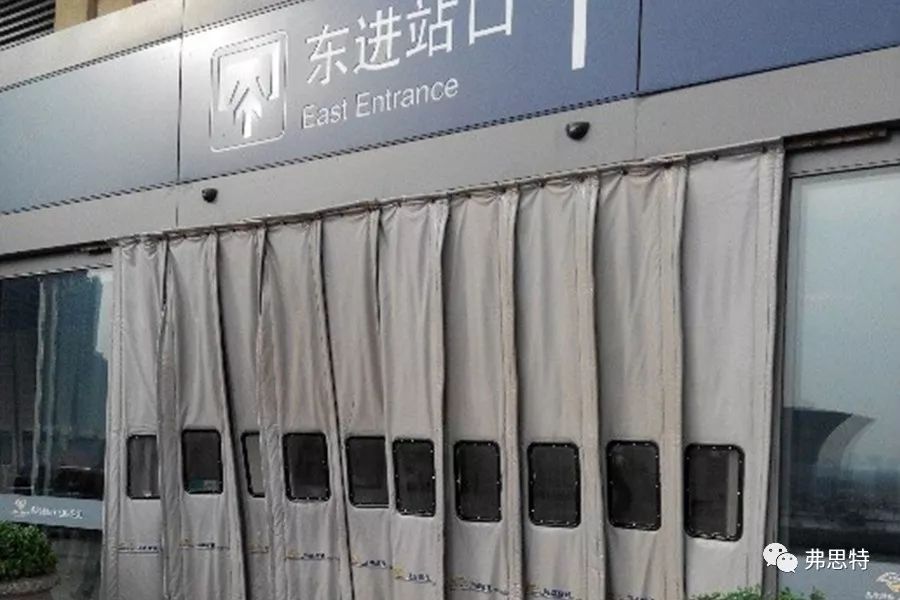
▲ Figure 1 Insulation door
Next, according to the definition of curtain wall, we will make a brief analysis of several common viewpoints.
Viewpoint 1: The curtain wall is installed outside the structure.
This statement can not be said to be wrong, because most of the curtain walls we usually see are installed outside the main structure, but not all curtain walls are so. The installation position of the curtain wall is either outside the beam or under the beam, which is determined by the architect according to the needs of the architectural effect (Fig. 2).
From the point of view of installation, the curtain wall is connected with the main structure through columns, and the window is fixed on the main structure by four frames or opposite frames with connectors (fixed pieces), which are continuously connected through the gap between the window frame and the structure. Therefore, whether it is installed outside the main structure or inside the main structure (under the beam), it is a curtain wall system as long as it is connected with the main structure by means of column suspension (Figure 3). The strip window we often see is also installed across the floor, because the installation method is fixed on the structure by the surrounding frame, there is no displacement capacity relative to the main structure, so the strip window is not a curtain wall.
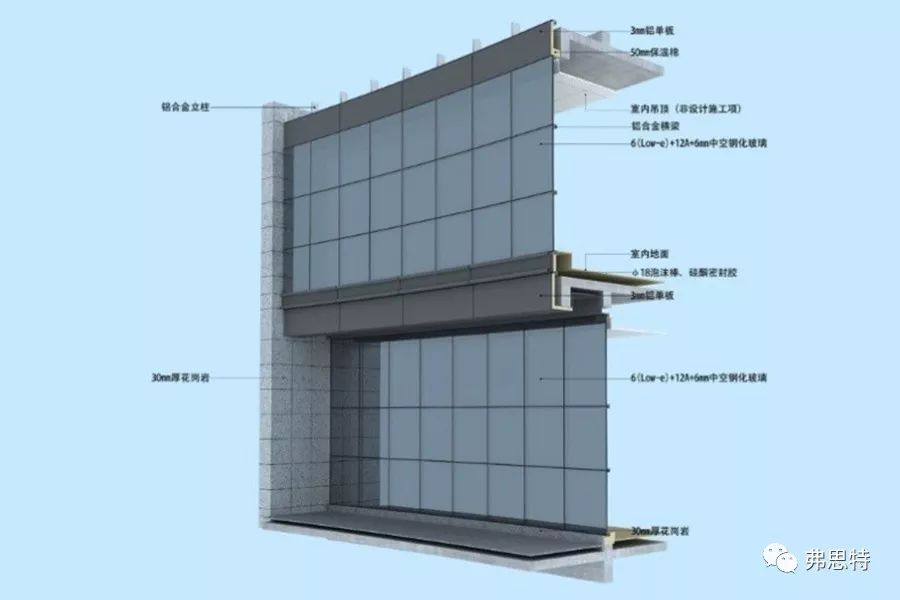
▲ Figure 2 Hidden Frame Glass Curtain Wall
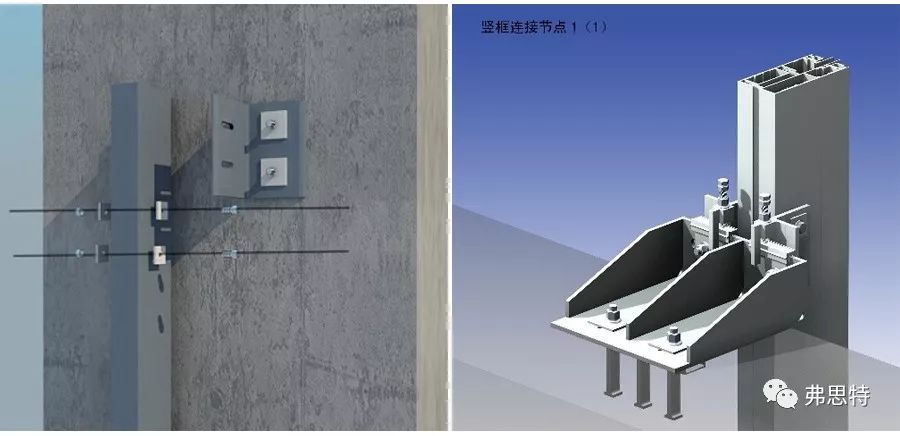
▲ Figure 3 Installation and Connection of Curtain Wall
According to the definition in Article 2.2 of the Terminology of Curtain Wall for Building (GB/T 34327-2017), the building curtain wall installed between floor slabs or between floor slabs and roof with layered anchorage support is called interlayer curtain wall. Based on this, a definition is made for the curtain wall and window between floors.
Viewpoint 2: The curtain wall is hung on the structure, and the window is supported on the structure.
According to this view, the window must be supported on the structure, and the curtain wall must be suspended on the structure. It is correct in terms of the noun meaning of curtain wall and the definition in the Curtain Wall for Building (GB/T 21086-2007), but this is only one of the ways of curtain wall installation. This can be more clearly understood in Shanghai's Technical Specification for Curtain Wall for Building Engineering (DGJ08-56-2012), which defines the building curtain wall as "a building envelope system composed of panels and supporting structures, which has a certain displacement capacity relative to the main structure, and does not bear the action of the main structure except for transferring its own load to the main structure". This statement is more clear, whether it is installed outside or inside the structure, the curtain wall must have a certain displacement capacity relative to the main structure; Article 5.5.3 of the Technical Code for Glass Curtain Wall Engineering (JGJ102-2003) states that "the column of frame-supported glass curtain wall should be hung on the main structure", and there is no mandatory requirement that it must be hung, which is also based on this reason. Therefore, whether it is suspended or supported, the curtain wall does not bear the action of the main structure, and it is still a curtain wall when it is supported on the structure (beam) through the column seat on the premise that the column is eccentrically compressed without instability. The frame of the window is continuously fixed on the structure and has no displacement ability relative to the main structure. Therefore, the curtain wall and window can be distinguished from the connection mode.
From the point of view of the way of force transmission, different ways of connection determine the different ways of force transmission. The dead weight of the curtain wall and the load and effect are transferred to the main structure through the way of panel → frame (transom-mullion) → mullion → connecting piece → embedded part in the form of point through the anchoring piece; while the dead weight of the window and the load are continuously transferred to the main structure through the fixed piece on the window frame. Simply and figuratively speaking, the force transmission of the curtain wall is a point, and the force transmission of the window is a line (Fig. 4).
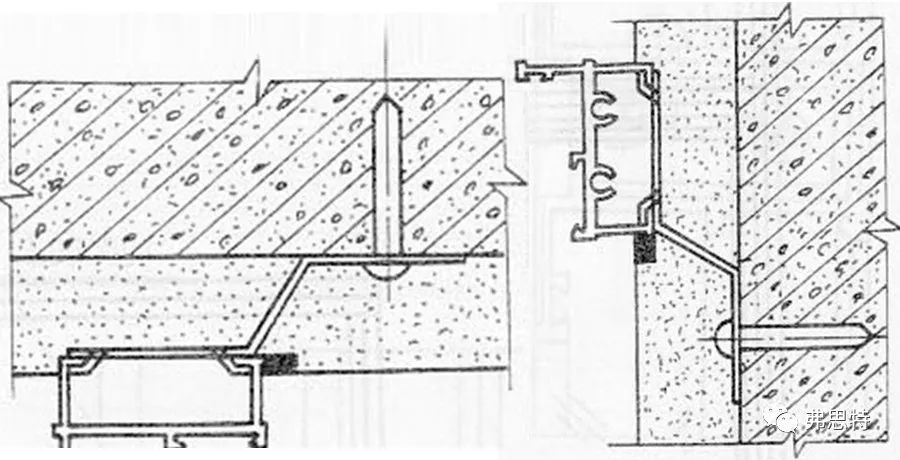
▲ Figure 4 Installation method of doors and windows
The vertical bar window on the building is also installed outside the structural beam because of the cross-floor installation, but the installation form is to fix the frame on the structure, and its force transmission mode is also continuous. Therefore, it is necessary to judge whether the enclosure structure is a curtain wall, not by the location of installation, but by the way it is connected with the main structure.
Viewpoint 3: The curtain wall is made of curtain wall profiles.
This statement is only a formal judgment of curtain walls and windows, which is obviously incorrect.
In the 1980s, when the domestic curtain wall was still in its infancy, there was no relatively mature curtain wall system. Many curtain walls were made of aluminum alloy square tubes and glass inserts, which were called "simple curtain walls" at that time. The reason why it is called simple curtain wall is that this structure does not have good airtight performance, watertight performance and thermal insulation performance, but as far as its installation method is concerned, it is connected with the main structure through the way of "column-connector-embedded parts", and the load on the plate is transmitted to the main structure through the connection of connectors and anchor plates. The system itself does not bear the effect of the main structure, and has a certain displacement and deformation capacity relative to the main structure, so even if it is simple, it belongs to the curtain wall system.
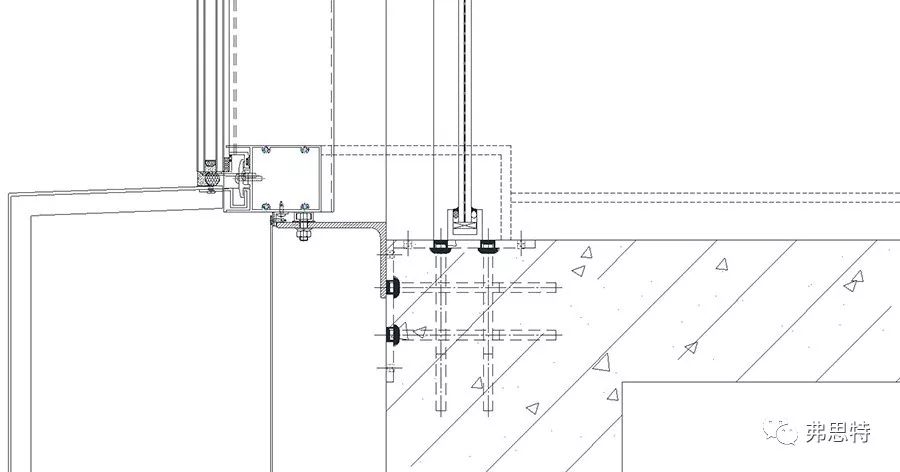
▲ Figure 5 Window Installation of Curtain Wall Profile-Curtain Wall Window
On the contrary, in some windows with large openings, ordinary window profiles can not meet the load requirements and effect requirements, so it is also a common method to use curtain wall profiles in practical engineering. At this time, the installation method is to fix the system on the structure in the form of equidistant connection of fixed pieces around the window frame, and the system has no displacement capacity relative to the main structure. From the point of view of connection mode and force transmission form, it is a window rather than a curtain wall (which is commonly referred to as a curtain wall window in the industry).
Viewpoint 4: The curtain wall is a continuous enclosure system suspended outside the main structure, while the window is an intermittent enclosure system supported within the main structure.
The premise of this view is correct, but it is one-sided. The curtain wall should be suspended, but it is not necessarily hung outside the structure, nor is it necessarily continuous; the window is supported in the structural opening, but it can also be continuous, which is what we call "row window" or "strip window" in our industry. Many building curtain walls are separated by structural columns, each column is a curtain wall, similar to the separation of windows, although not a continuous large area, but still a curtain wall. Many buildings are designed with long corridors or open office spaces, and their external windows are in the form of row windows. One or several sides are combined by various forms of windows such as open windows and fixed windows to form a continuous large row of windows, which are continuous, but not curtain walls.
According to the description of Article 2.3 of the Terminology of Curtain Wall (GB/T 34327-2017), the metal frame supported glass curtain wall installed between floors or between floors and roofs is a common form of interlayer glass curtain wall, which is called window curtain wall. Combined with Articles 2.2 and 2.3 of the Terminology of Curtain Wall (GB/T 34327-2017), this issue should also be clear.
Viewpoint 5: The decorative frame (plate) installed outside the solid wall is also a curtain wall.
As mentioned above, in the Curtain Wall for Building (GB/T20186-2007), the definition of building curtain wall is "a building peripheral retaining wall composed of panel and supporting structure system (supporting device and supporting structure), which has a certain displacement capacity or deformation capacity relative to the main structure and does not bear the action of the main structure". In the Technical Code for Glass Curtain Wall Engineering (JGJ102-2003), it is described as "building envelope and decorative structure composed of supporting structure system and panel, which can have certain displacement or deformation capacity relative to the main structure, and does not share the role of the main structure". The description of JGJ102 is more specific. It clarifies that the building curtain wall includes two structural forms: one is the curtain wall with the functions of heat preservation, heat insulation, waterproof and sound insulation, which we call functional curtain wall for the time being; Another is that the building itself has an envelope structure, which is only designed for the architectural effect, such as aluminum curtain wall, stone curtain wall, etc. Other open curtain walls are decorative curtain walls. But this should also be distinguished according to the specific architectural design requirements. If there is no solid enclosure structure inside the aluminum curtain wall or stone curtain wall, and the curtain wall structure itself needs to have waterproof, thermal insulation, sound insulation and other functions, then such aluminum and stone curtain walls are also functional curtain walls. However, the definition of building curtain wall in the Technical Code for Metal and Stone Curtain Wall Engineering (JGJ133-2001) is "the building envelope structure composed of metal frame and plate, which does not bear the load and action of the main structure". For this definition, we can understand that the external envelope system of a building, whether it has displacement capacity relative to the main structure or not, is the curtain wall as long as it does not bear the load and action of the main structure. This leads to the confusion of curtain walls and doors and windows, and also leads to the phenomenon of mixing decorative components as curtain walls.
According to the definition in Article 2.1 of the newly promulgated and implemented Terminology of Curtain Wall (GB/T 34327-2017). Curtain wall is composed of panel and supporting structure system, which has specified bearing capacity, deformation capacity and ability to adapt to the displacement of the main structure, and does not share the role of the main structure. According to the method, whether the decorative component is a curtain wall or not can be judged.
To sum up, judging whether a building enclosure system is a curtain wall or a window depends on the meaning of its name and the connection between the system and the main structure. The building curtain wall shall meet the following requirements:
1) A system consisting of frames and panels independent of the main structure;
2) Connecte with that main body structure through an upright post;
3) Do not bear the load and effect of the main structure;
4) It has a certain displacement capacity relative to the main structure and the ability to adapt to the displacement of the main structure.
According to these four characteristics and combined with the meaning of the term curtain wall, we can correctly distinguish the building curtain wall and window. It should be emphasized here that the curtain wall must be connected with the main structure through columns, which is the key to distinguish the curtain wall from the window.











